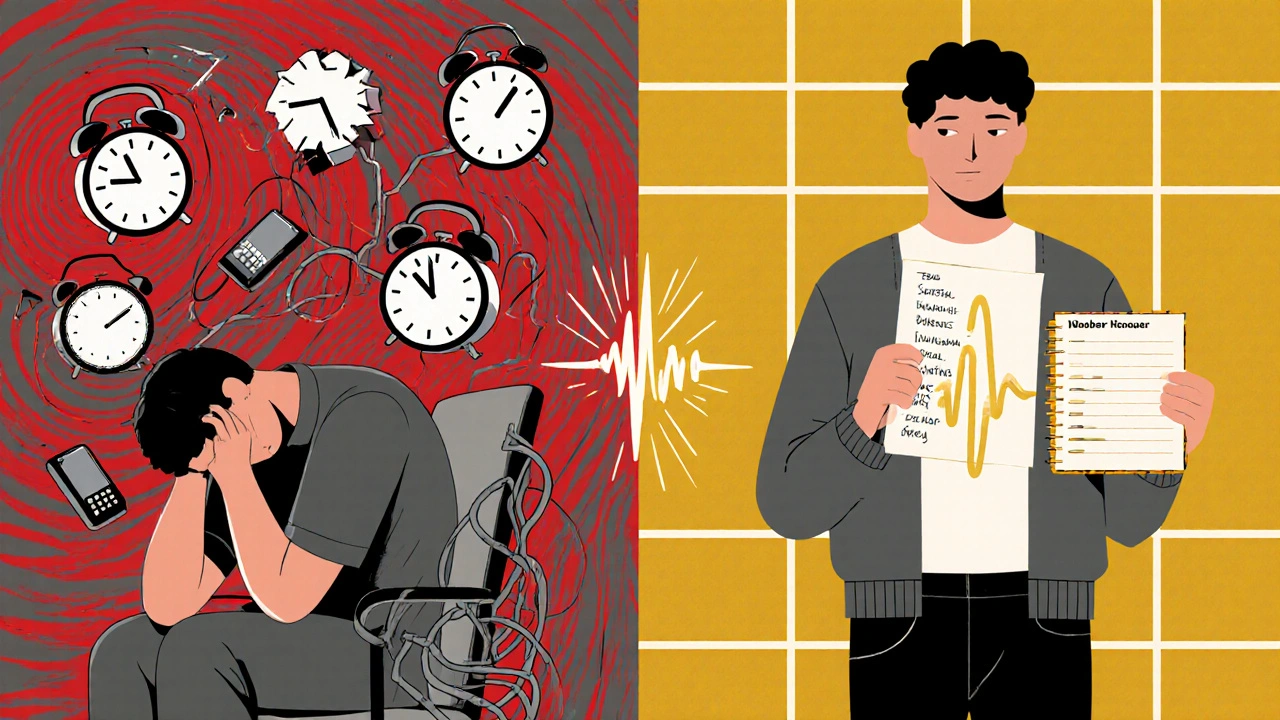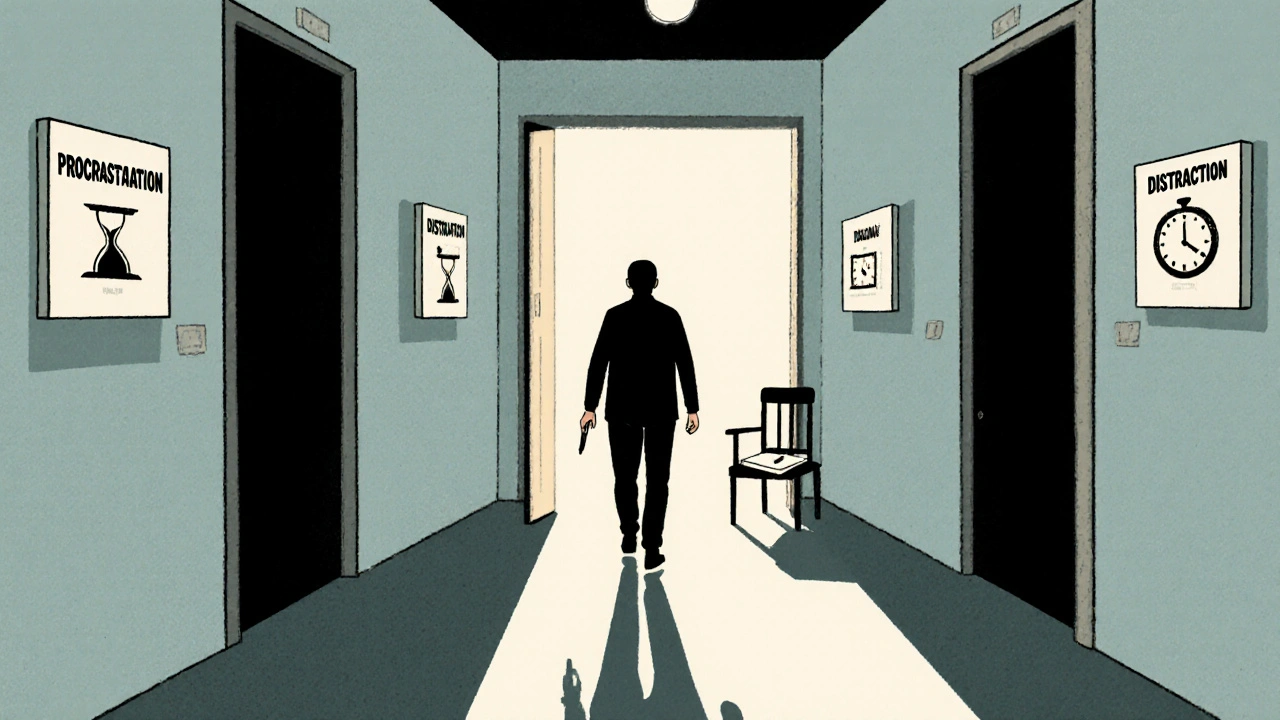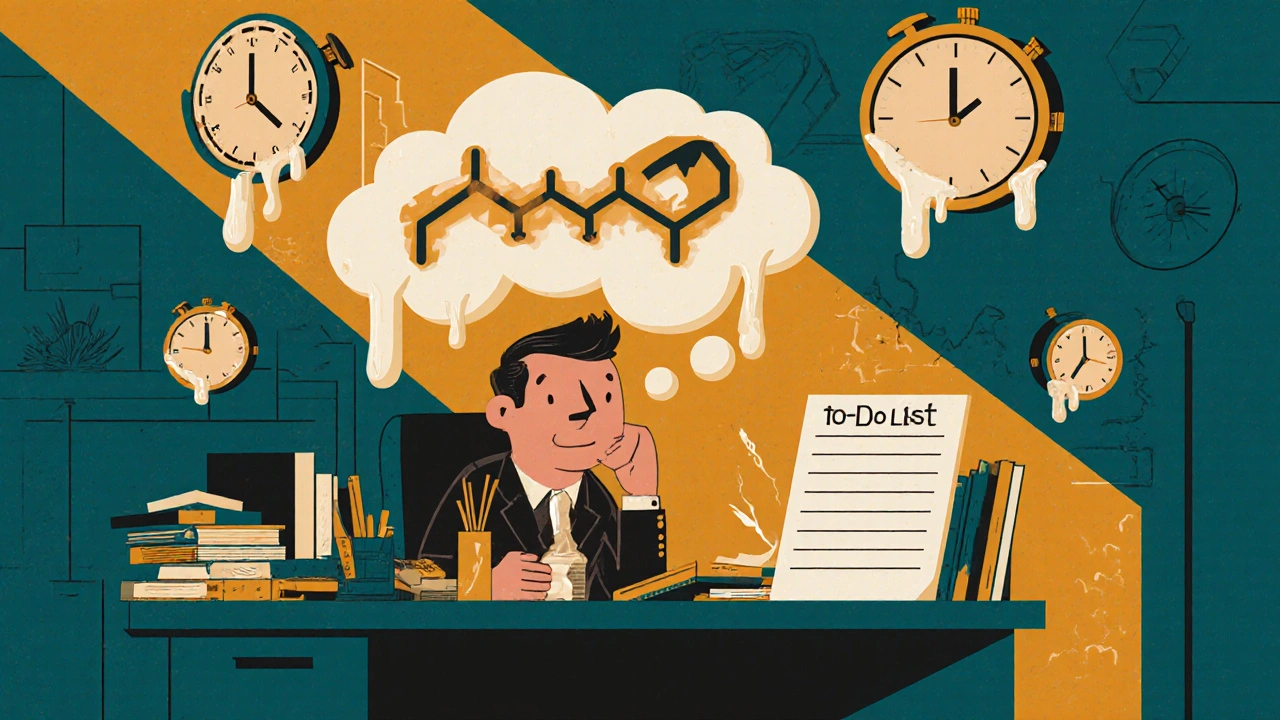If you’ve ever stared at a to-do list that never gets shorter, missed deadlines because you couldn’t start, or lost hours scrolling instead of working-you know how time slips away. For many adults with ADHD, this isn’t laziness or poor discipline. It’s a neurological glitch. And one medication that’s helping people reclaim their days is atomoxetine.
What Atomoxetine Actually Does in the Brain
Atomoxetine, sold under the brand name Strattera, isn’t a stimulant like Adderall or Ritalin. It doesn’t flood your brain with dopamine right away. Instead, it works slowly, quietly, by increasing norepinephrine levels. Norepinephrine is the brain’s alertness chemical. It helps you stay focused, filter distractions, and hold thoughts in your mind long enough to act on them.
Think of it like turning up the volume on your internal alarm clock. Without enough norepinephrine, your brain doesn’t signal urgency well. A task like “pay bills” doesn’t feel important until it’s overdue. Atomoxetine helps fix that.
Why Time Management Breaks Down in ADHD
Time management isn’t about being organized-it’s about executive function. That’s the brain’s control center for planning, starting tasks, estimating time, and switching between activities. In ADHD, this system runs on low battery.
People with ADHD often:
- Underestimate how long tasks take (time blindness)
- Get stuck in “task initiation paralysis” - knowing what to do but not starting
- Jump between tasks without finishing any
- Forget appointments or deadlines even when written down
These aren’t habits. They’re symptoms of how the brain processes time and priority. Medication doesn’t teach you to plan-it gives your brain the chemical tools to follow through on plans you already know are good.
How Atomoxetine Changes Daily Routines
Real people report real shifts after starting atomoxetine. Not overnight. But over weeks.
One user in Edinburgh, 38, said: “I used to start work at 11 a.m. because I’d spend two hours staring at my screen. After three weeks on atomoxetine, I was starting at 8 a.m. without effort. I didn’t feel hyper. I just… cared more about getting things done.”
Studies show that after 12 weeks of atomoxetine treatment, adults with ADHD improved their time estimation accuracy by 40%. That means if you thought a task would take 30 minutes, you were now closer to 40 minutes instead of 90.
Another study from the University of Cambridge tracked 120 adults on atomoxetine. After six months, 68% reported better task completion rates. 72% said they were less likely to miss appointments. These aren’t vague improvements-they’re measurable changes in daily functioning.
It’s Not About Speed. It’s About Consistency
Atomoxetine doesn’t make you a productivity machine. You won’t suddenly finish three projects in a day. What it does is make your consistency level rise.
Before: You’d work hard for two days, then vanish for a week. After: You show up every day. You open the document. You write one paragraph. Then another. You don’t wait for motivation. It comes because your brain no longer ignores the task.
This is why atomoxetine works better for time management than stimulants for some people. Stimulants give a sharp peak-great for short bursts, terrible for long-term focus. Atomoxetine gives a steady hum. It’s the difference between a sprinter and a marathon runner.

What Happens When You Stop Taking It?
Many people stop atomoxetine because they don’t feel “drugged” or “high.” But the side effects are mild: dry mouth, upset stomach, or slight insomnia in the first few weeks. The real problem? When you stop, the benefits fade.
Research shows that within 4-6 weeks of discontinuing atomoxetine, time management scores drop back to pre-treatment levels. That doesn’t mean it’s addictive. It means your brain reverts to its baseline without the norepinephrine boost.
That’s why long-term use is common. It’s not a cure. It’s a tool-like glasses for your brain.
Who Benefits Most?
Atomoxetine isn’t for everyone. It works best for adults with:
- Primarily inattentive ADHD (not hyperactive)
- Difficulty starting tasks, not just being distracted
- History of stimulant side effects (anxiety, insomnia, appetite loss)
- Need for non-stimulant treatment (e.g., due to substance use history)
If you’re someone who forgets lunch because you’re deep in a YouTube rabbit hole, atomoxetine might help. If you’re constantly fidgeting and interrupting people, you might need something else.
What to Expect in the First Month
Don’t expect miracles. Atomoxetine takes 4-8 weeks to reach full effect. The first two weeks? You might feel more tired or slightly nauseous. That’s normal.
By week 3, you might notice:
- Less mental fog when opening your email
- Starting chores without needing a pep talk
- Remembering to set alarms
- Finishing one task before starting another
These aren’t dramatic. But they’re life-changing when you’ve spent years feeling like you’re always catching up.

Combining It With Practical Tools
Medication isn’t magic. It’s the foundation. You still need structure.
People who combine atomoxetine with simple systems see the biggest gains:
- Use a physical planner-not just phone reminders. Writing by hand reinforces memory.
- Break tasks into 15-minute chunks. “Write report” becomes “Open document, write one paragraph, take a 5-minute walk.”
- Set two alarms: one for starting, one for stopping. ADHD brains lose track fast.
- Use the “5-second rule”: When you think of a task, count backward from 5 and move. Don’t let your brain talk you out of it.
One man in Glasgow said: “Atomoxetine made me want to use my planner. Before, I hated it. Now, I check it like a clock.”
When It Doesn’t Work
Not everyone responds. About 30% of adults don’t see significant improvement. That doesn’t mean you’re broken. It means your brain chemistry might need something else.
If after 12 weeks you don’t notice:
- Better task initiation
- Fewer missed deadlines
- Less mental resistance to routine tasks
Then talk to your doctor. Options include switching to a stimulant, trying bupropion, or adding behavioral therapy.
Don’t give up on treatment. Give up on the wrong treatment.
Final Thought: It’s Not About Being Perfect
Atomoxetine doesn’t turn you into a robot who wakes up at 5 a.m. and crushes goals. It turns you into someone who can show up-even on the days you don’t feel like it.
That’s the real win. Not productivity. Presence. The ability to sit down and do the thing, even when your brain screams, “Not now.”
For thousands of adults, atomoxetine isn’t just a pill. It’s the quiet voice that says, “You can start.” And that’s enough.
Does atomoxetine help with procrastination?
Yes, for many adults with ADHD, atomoxetine reduces procrastination by improving task initiation. It doesn’t eliminate the urge to delay, but it makes it easier to start tasks even when motivation is low. This is because it boosts norepinephrine, which helps the brain recognize urgency and prioritize actions.
How long does it take for atomoxetine to improve time management?
Most people begin noticing subtle improvements in focus and task initiation after 2-4 weeks. Full effects on time management-like better planning, fewer missed deadlines, and improved task completion-typically appear after 8 to 12 weeks of consistent use. It’s not fast-acting like stimulants, but the results are steady and sustainable.
Can atomoxetine be taken with therapy for better time management?
Absolutely. Many clinicians recommend combining atomoxetine with cognitive behavioral therapy (CBT) for ADHD. Therapy helps build practical skills like planning, breaking tasks down, and using reminders. Medication supports the brain’s ability to follow through. Together, they’re more effective than either alone.
Is atomoxetine better than stimulants for time management?
It depends on the person. Stimulants offer quick, strong focus boosts but can cause crashes, anxiety, or sleep issues. Atomoxetine provides a steadier, all-day effect without the highs and lows. For people who struggle with consistency over long hours or have a history of stimulant side effects, atomoxetine often works better for daily time management.
Does atomoxetine cause weight loss or appetite changes?
Yes, some people experience reduced appetite and mild weight loss, especially in the first few weeks. This is usually temporary and less severe than with stimulants. If weight loss becomes significant or concerning, talk to your doctor. Monitoring nutrition and eating regular meals helps manage this side effect.
Can I drink alcohol while taking atomoxetine?
It’s not recommended. Alcohol can increase drowsiness and dizziness when combined with atomoxetine. It may also worsen mood changes or liver stress. While occasional light drinking might be tolerated by some, it’s safest to avoid alcohol, especially when starting the medication or adjusting the dose.
Is atomoxetine addictive?
No. Atomoxetine is not a controlled substance and has no known potential for abuse or dependence. Unlike stimulants, it doesn’t produce euphoria or a high. It works by gradually increasing norepinephrine, not by triggering rapid neurotransmitter spikes. This makes it a safer long-term option for many adults.
If you’re struggling with time management and suspect ADHD, talk to a healthcare provider. Atomoxetine isn’t a quick fix-but for many, it’s the quiet key that unlocks the ability to finally get started.


Patrick Hogan
October 29, 2025 AT 23:38prajesh kumar
October 31, 2025 AT 05:01Arpit Sinojia
November 1, 2025 AT 12:53Uttam Patel
November 3, 2025 AT 11:04Nolan Kiser
November 4, 2025 AT 18:25William Cuthbertson
November 6, 2025 AT 11:48Eben Neppie
November 6, 2025 AT 16:45Steven Shu
November 8, 2025 AT 16:33Alanah Marie Cam
November 9, 2025 AT 00:14Yaseen Muhammad
November 10, 2025 AT 11:41John Dumproff
November 11, 2025 AT 12:39Lugene Blair
November 13, 2025 AT 05:21Hudson Owen
November 14, 2025 AT 19:11Dylan Kane
November 16, 2025 AT 07:42Eben Neppie
November 17, 2025 AT 16:22